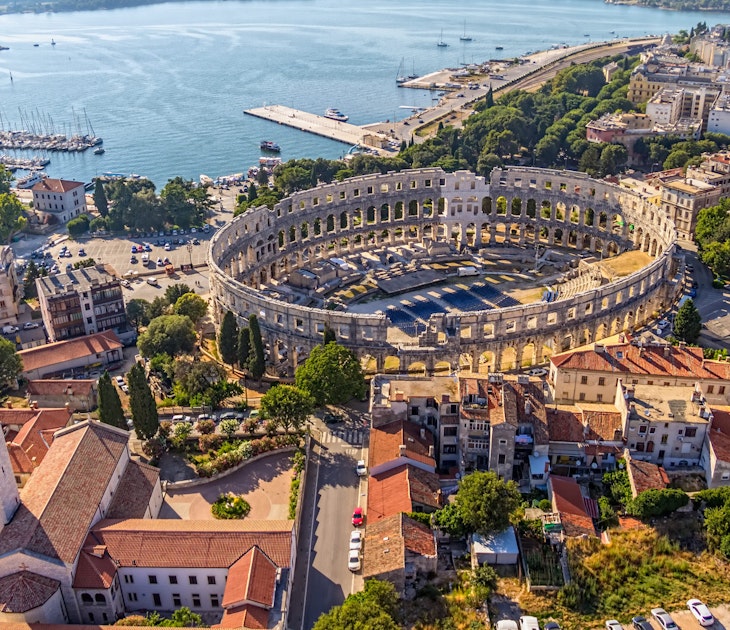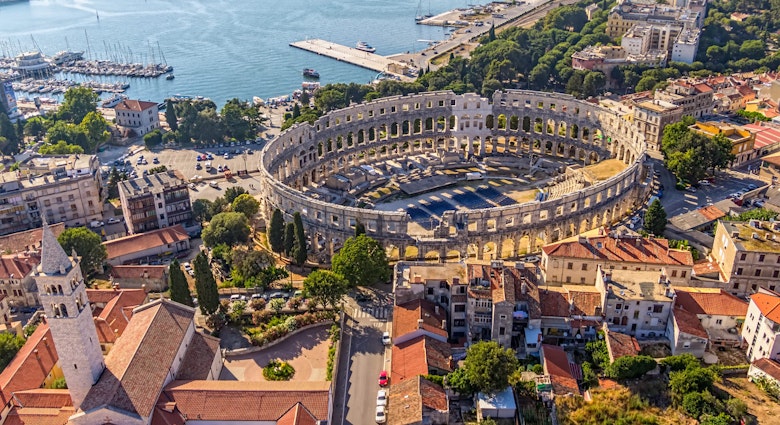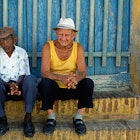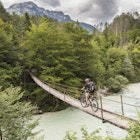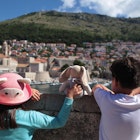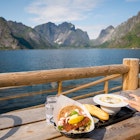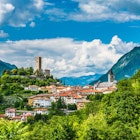Continental Croatia meets the Adriatic in Istria, the heart-shaped peninsula just south of Trieste in Italy. While the bucolic interior of rolling hills and fertile plains attract artsy visitors to its ancient villages, rural hotels and farmhouse restaurants, the verdant indented coastline is enormously popular with the sun'n'sea set.
Heading inland from the Istrian coast, you'll notice that crowds dissipate, hotel complexes disappear and what emerges is an unspoiled countryside of medieval hilltop towns, pine forests, fertile valleys and vineyard-dotted hills. The pace of daily life slows down considerably, defined less by the needs of tourists and more by the demands of harvesting grapes, hunting for truffles, picking wild asparagus and cultivating olive groves.
Farmhouses are opening their doors to visitors looking for an authentic holiday experience, rustic taverns in the middle of nowhere serve up slow-food delights, and Croatia's top winemakers provide tastings in their cellars. Remote hilltop villages that once seemed doomed to ruin are attracting colonies of artists and artisans as well as well-heeled foreigners. While many compare the region to Tuscany and the Italian influence can't be denied, it's a world all its own – unique, magnetic and wholesome.
You'll need a car to explore this area, as the bus and train connections are very sporadic. Good news is, you're never far from the sea.
In southern Istria, Svetvinčenat (also known as Savičenta) is an endearing little town. First settled by Benedictines, it centres on the Renaissance town square. With its surrounding tall cypress trees, harmoniously positioned buildings and laid-back ambience, it's a delightful place for a wander - the north part of the square is occupied by the 13th-century Grimani Castle.
Right in the heart of Istria lies Pazin, which is undoubtedly most renowned site for its Chasm, an abyss of about 100m through which the Pazinčica River sinks into subterranean passages forming three underground lakes. Its shadowy depths inspired the imagination of Jules Verne, as well as numerous Croatian writers.
Southeast of Pazin lies Gračišće, a sleepy medieval town and a highlight of Istria that is overlooked by most visitors. Surrounded by rolling hills, its collection of ancient buildings can be circled in around 30 minutes, the ambience is truly lovely and you won't be treading on many people's trails.
The self-pronouncing city of truffles, Buzet and its nearby forests in the region's north boast three sorts of black truffles as well as the big white truffle – one of the most prized in the world at 34,000KN per kilo. Croatia's largest exporter of Istrian truffles is Zigante Tartufi, whose share of the overall Croatian export market is about 90%. In 1999 the company's owner Giancarlo Zigante, along with his dog Diana, found the world's largest truffle in Istria, weighing 1.31kg and making it into the Guinness Book of World Records.
A skip to the left is a captivating little town called Motovun, perched on a 277m-high hill in the Mirna River Valley, about 25km northeast of Poreč. It was the Venetians who decided to fortify the town in the 14th century, building two sets of thick walls. Within the walls, an atmospheric cluster of Romanesque and Gothic buildings now houses a smattering of artists studios. Newer houses have sprung up on the slopes leading to the old town, but you won't even notice, especially if you come for the popular film festival that takes place here every summer.
Connoisseurs of the macabre can't miss Vodnjan (Dignano in Italian), located 10km north of Pula, in southern Istria. Lying inside a sober church in this sleepy town are the ‘mummies' that constitute Vodnjan's primary tourist attraction. These desiccated remains of centuries-old saints, whose bodies mysteriously failed to decompose, are considered to have magical powers.
